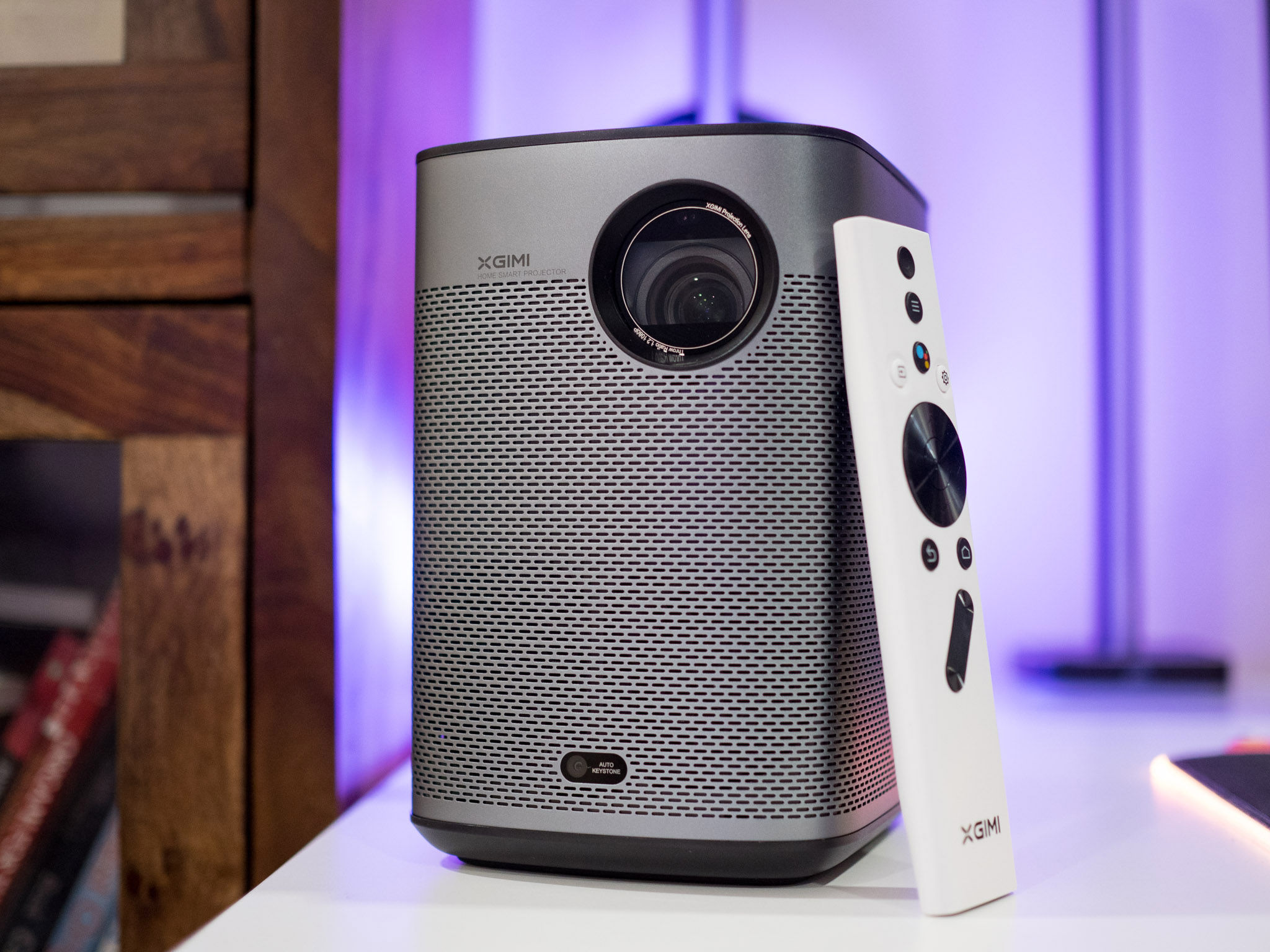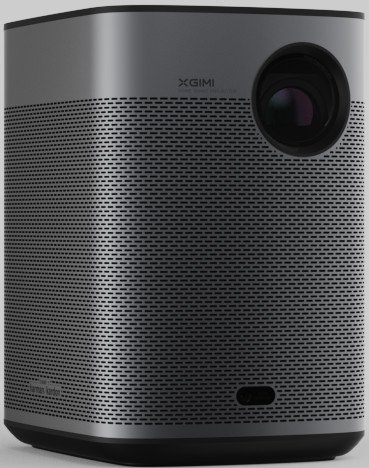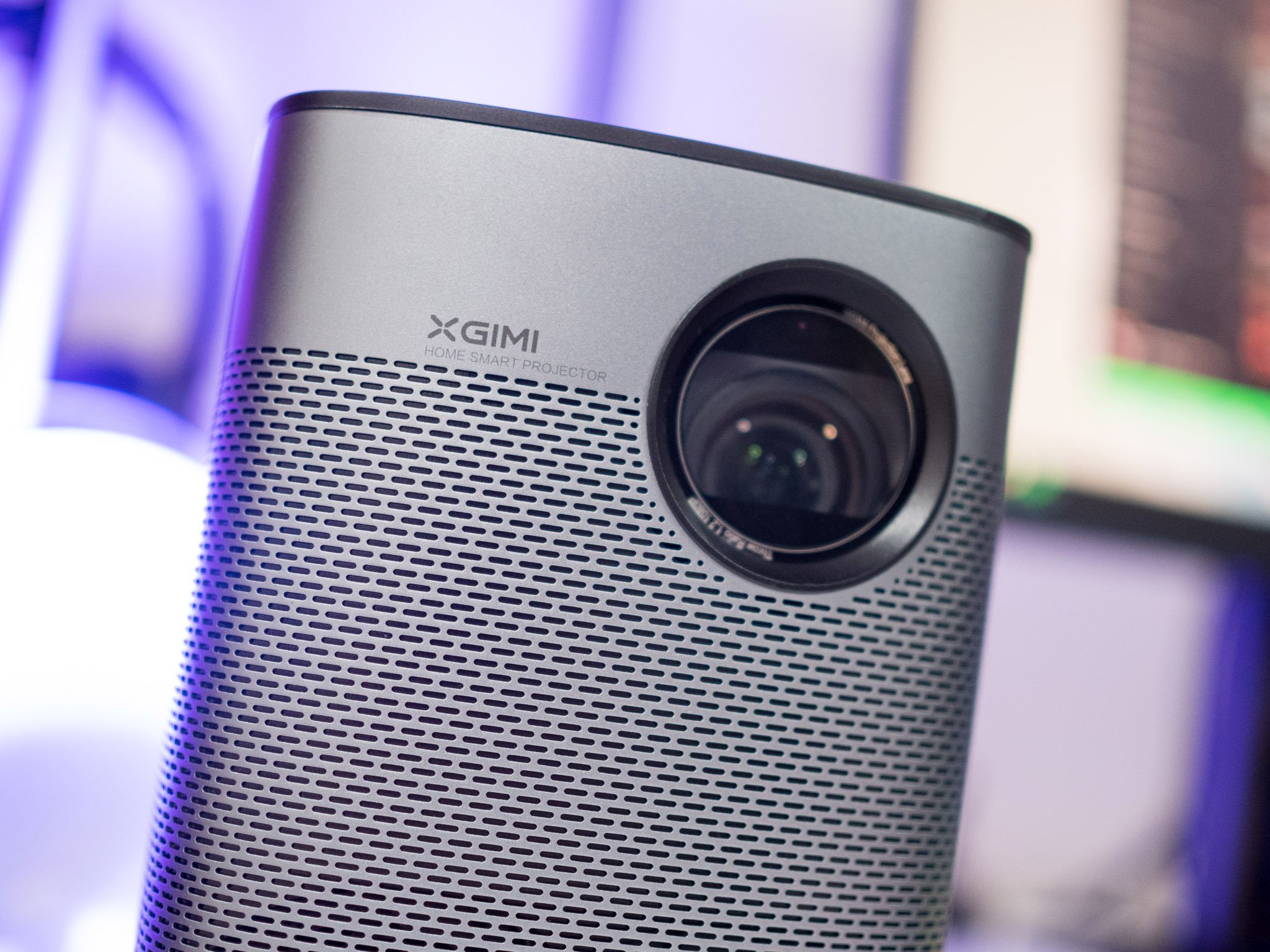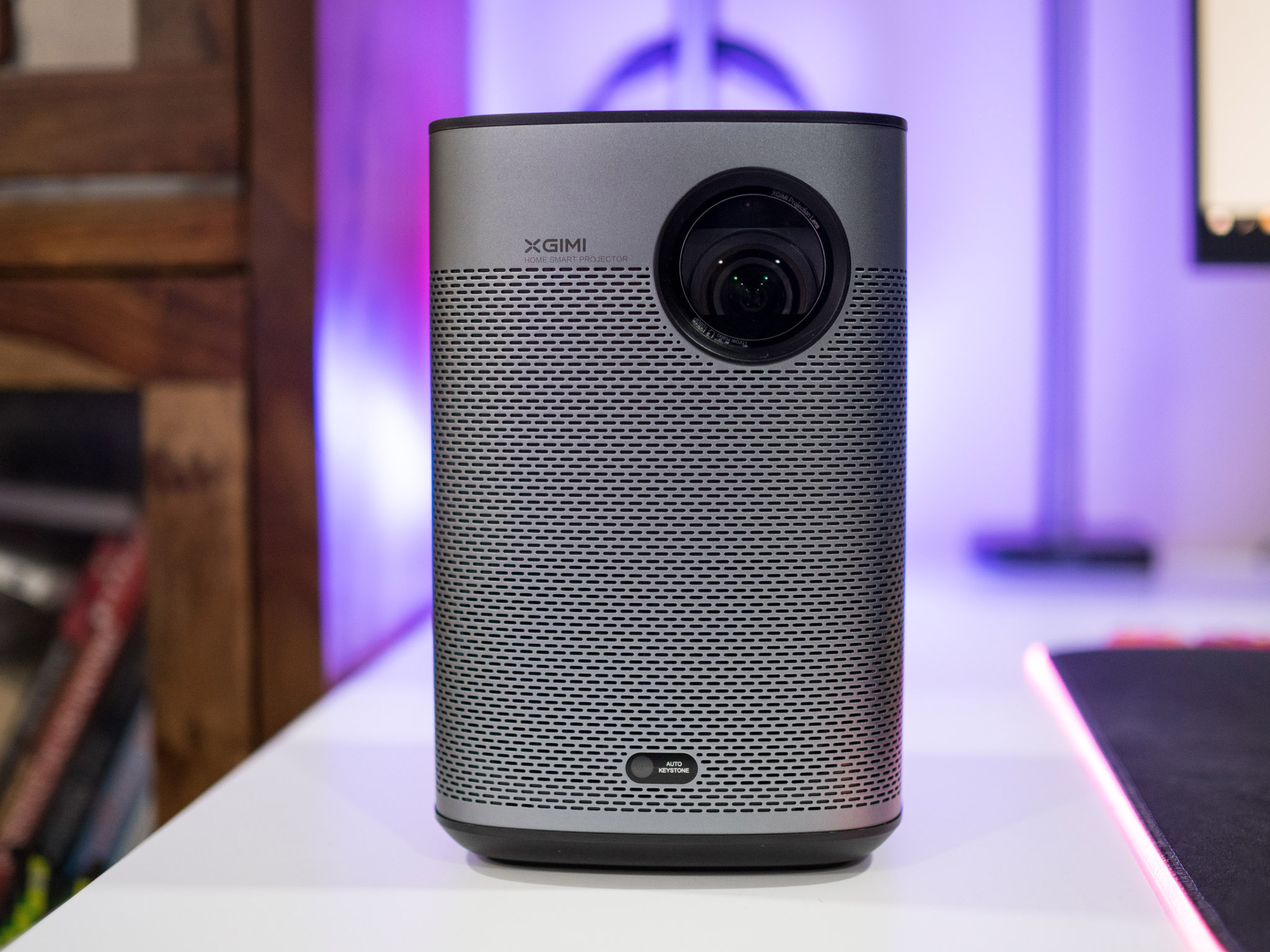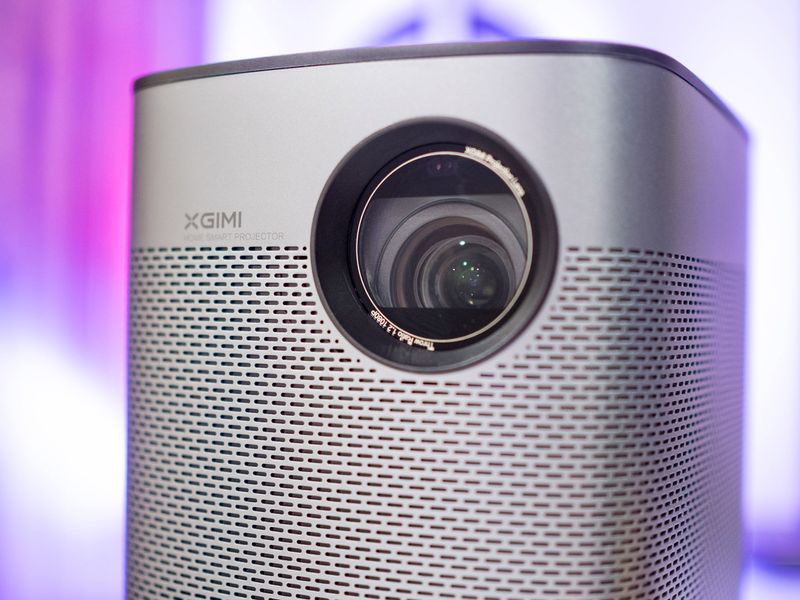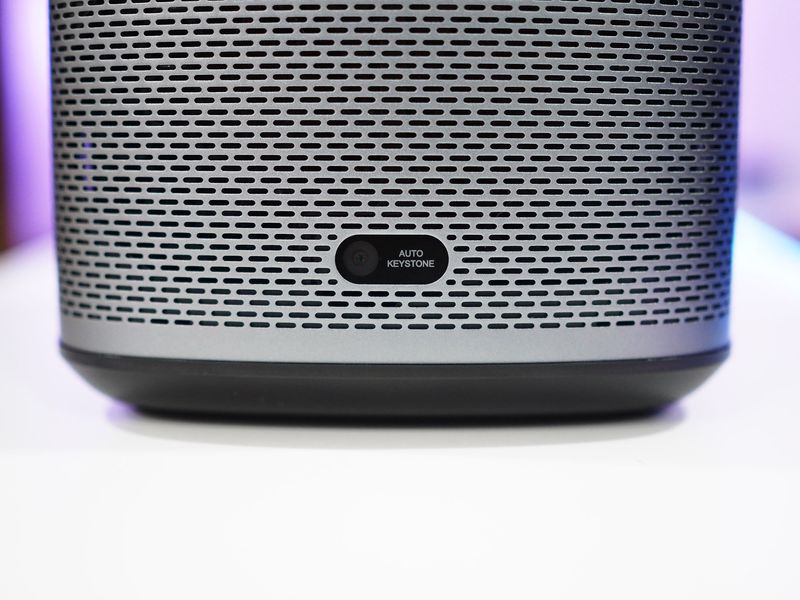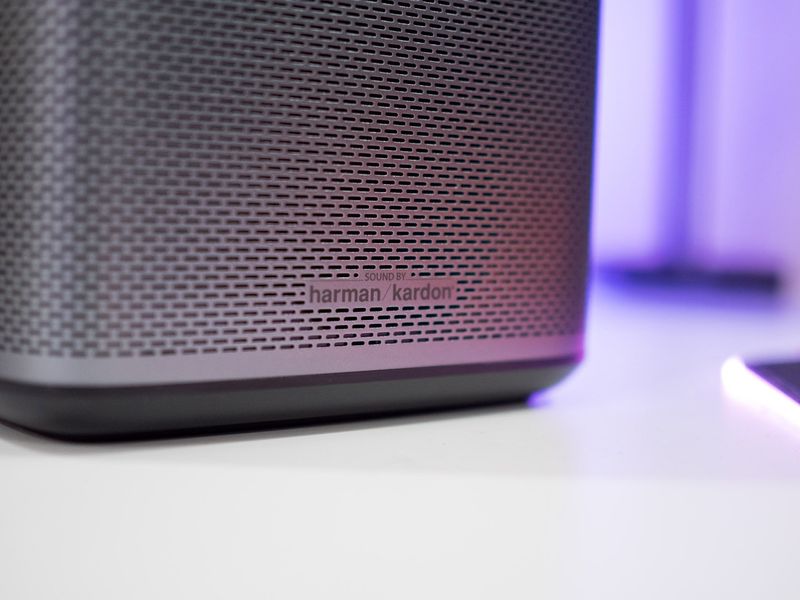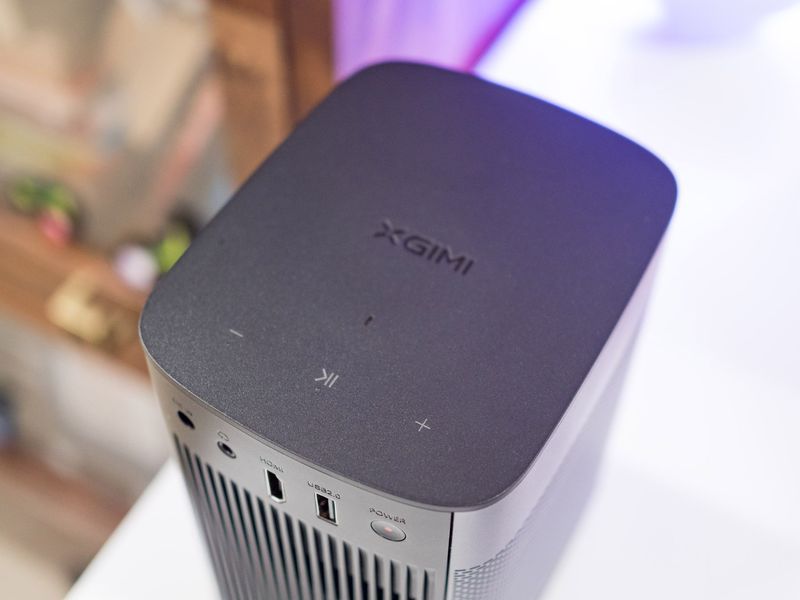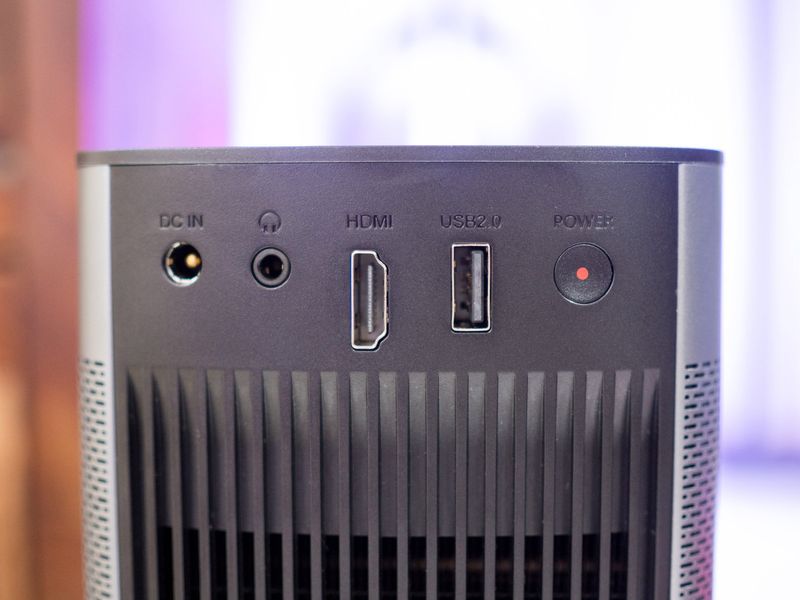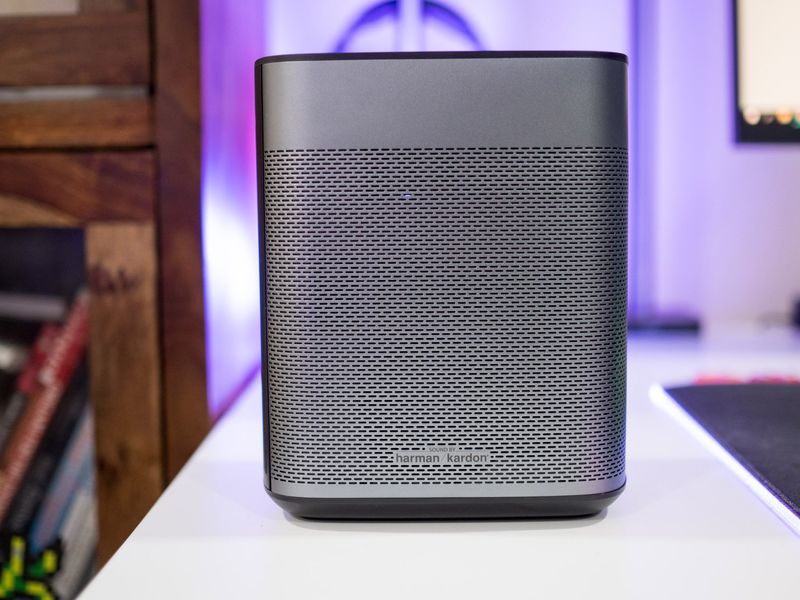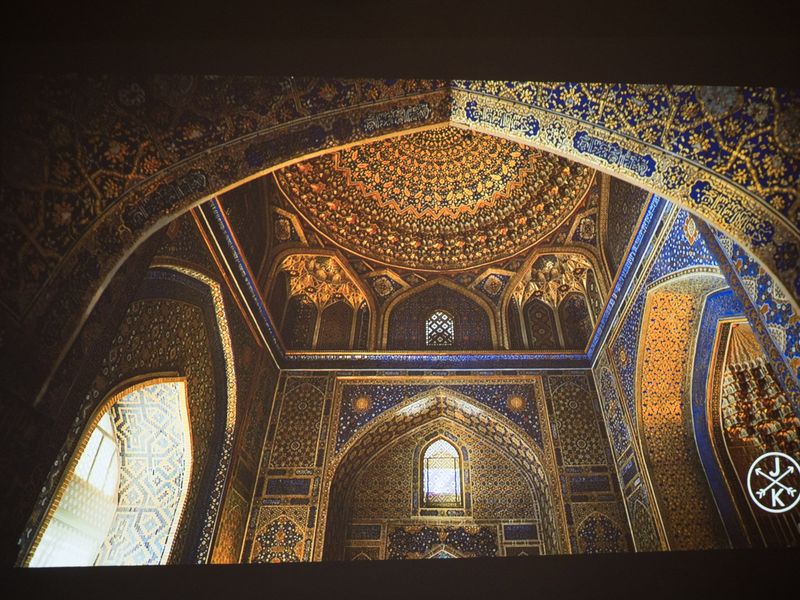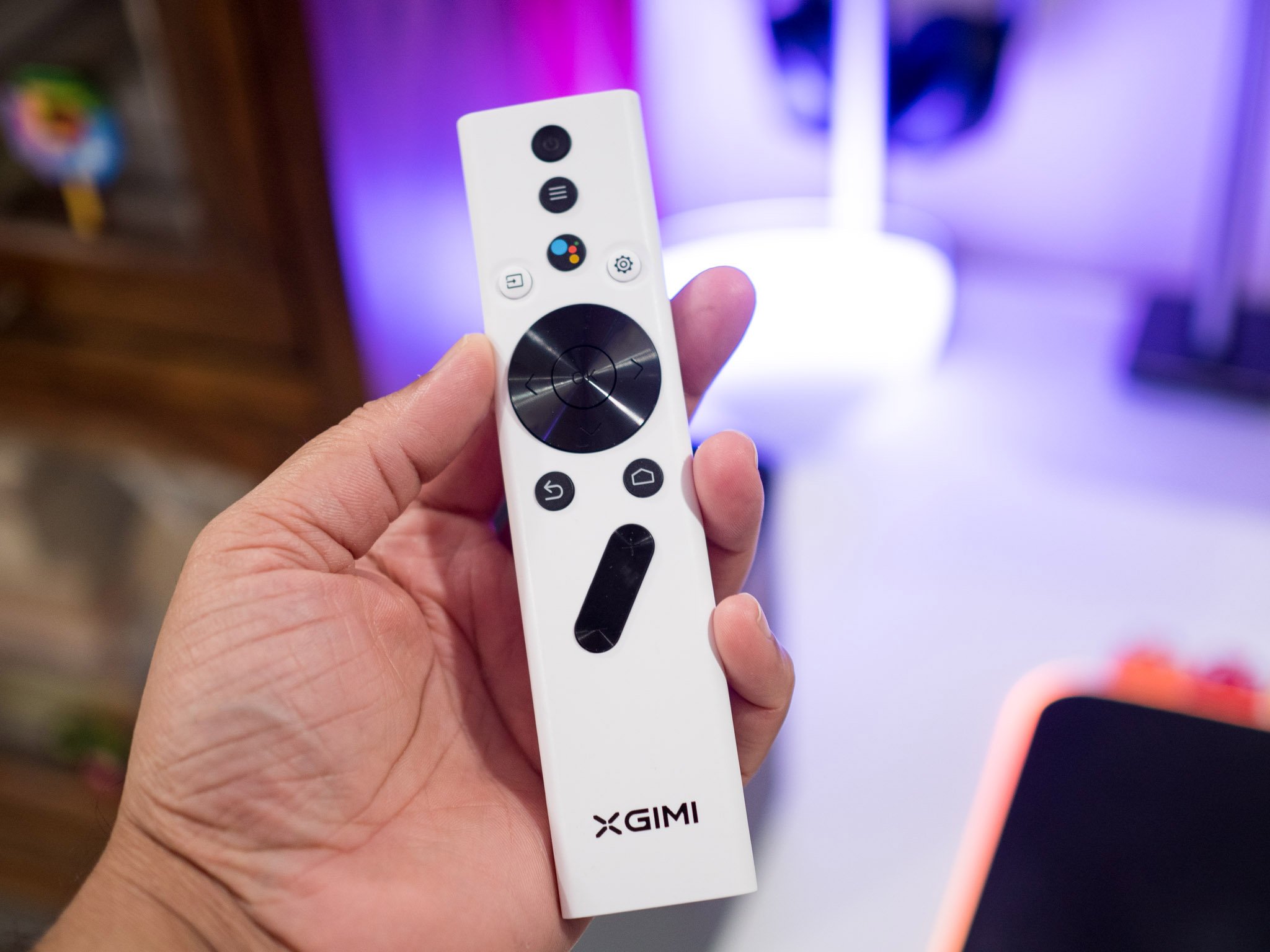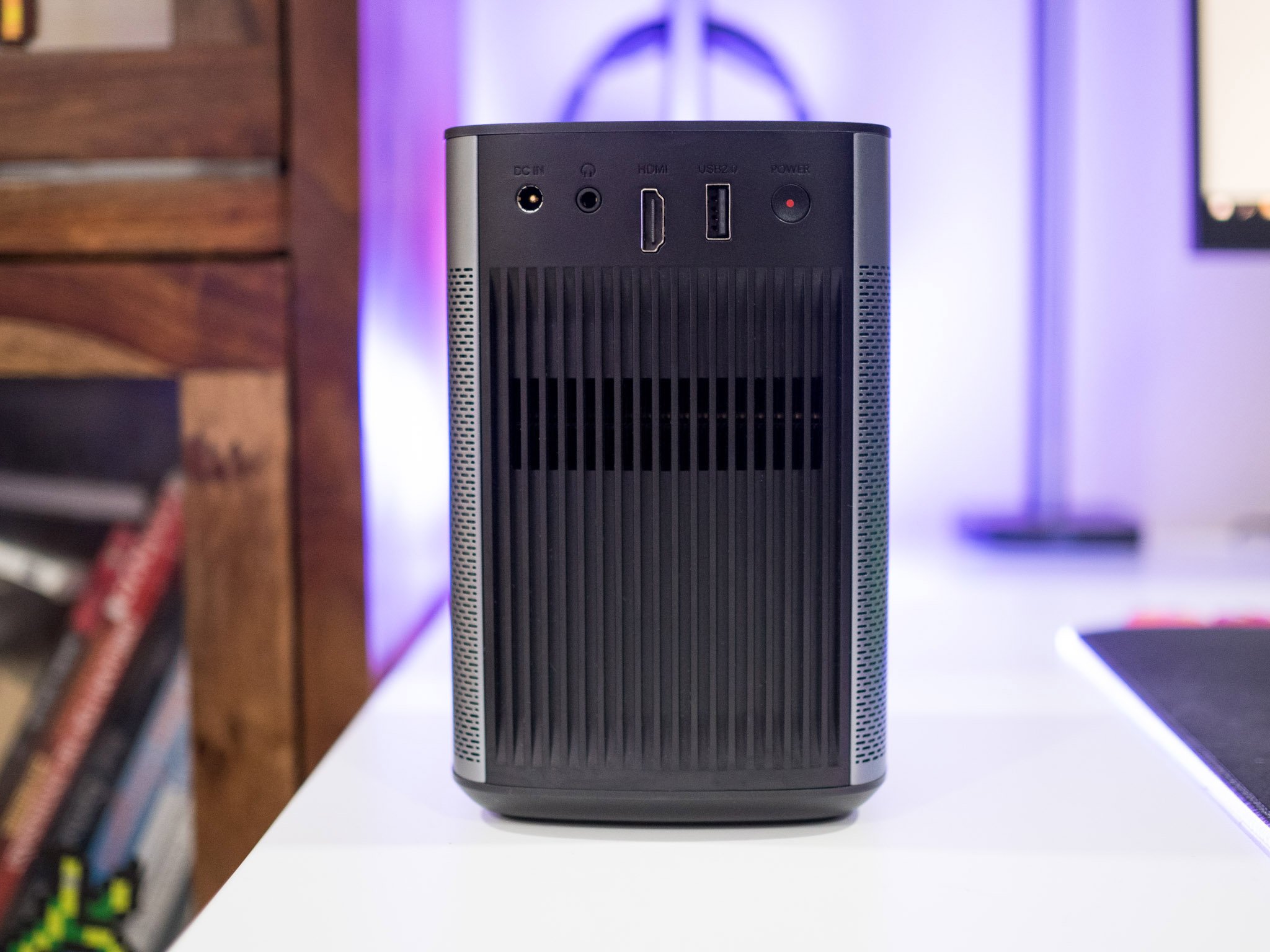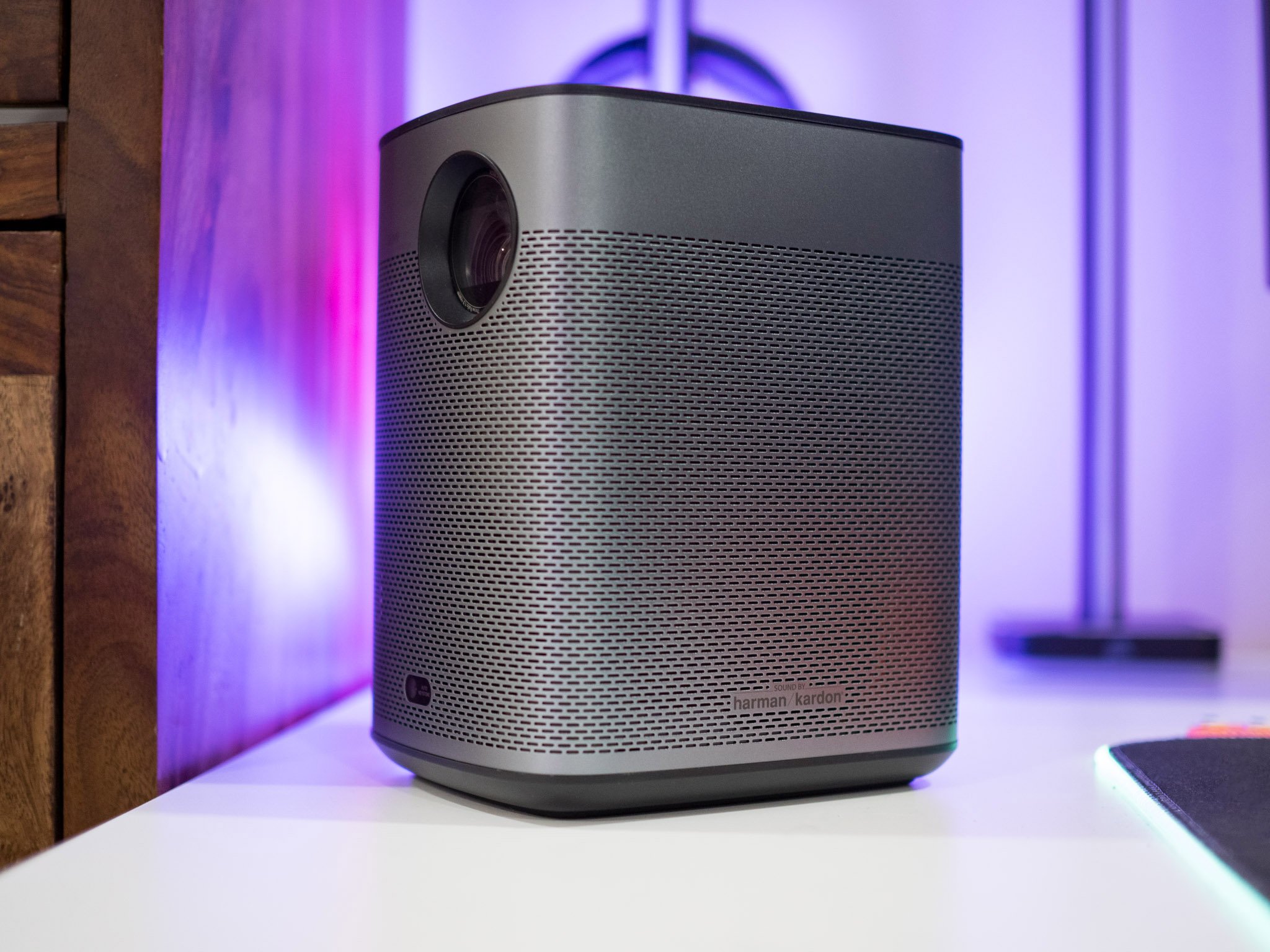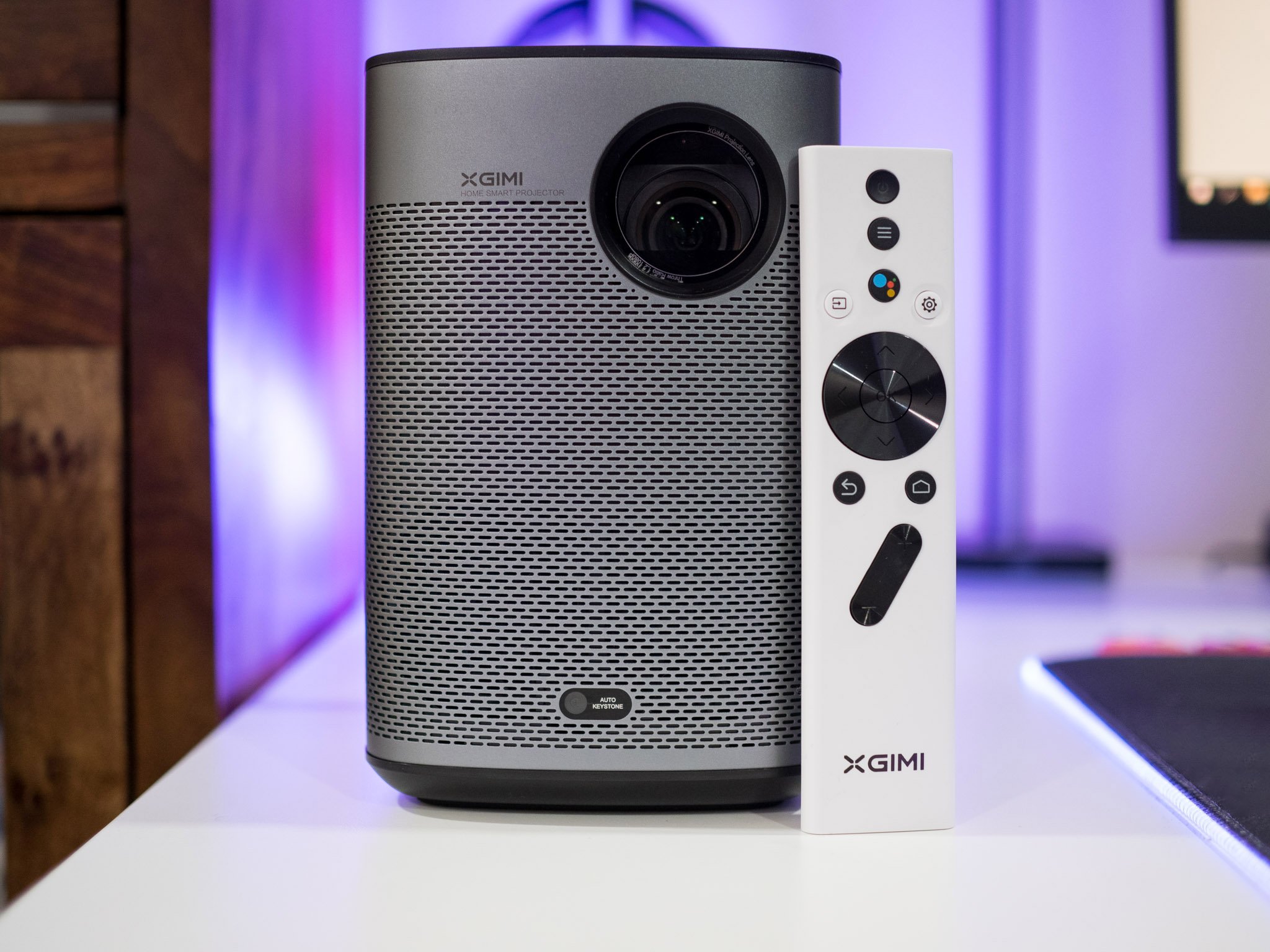The Halo+ delivers a bright 1080p image, has great onboard sound, and includes auto keystone correction.
XGIMI has steadily added to its projector portfolio over the course of 2021. The launch of the Horizon Pro was a key moment in the brand's journey as it was its first 4K projector, and that was followed by the svelte Elfin, a 1080p LED projector that is easy to carry around.
The manufacturer is now focusing its attention on the portable segment with the Halo+. The projector is an updated model of the first-gen Halo that launched in 2020, and while the design doesn't look too different, there are a few key changes. The Halo+ projects a brighter image at 900 lumens, has beefier hardware, and runs Android TV 10 out of the box.
But the biggest change is around keystone correction; the Halo+ features XGIMI's amazing auto keystone correction with both vertical and horizontal adjustments. So if you're in the market for the best Android TV projector for portable use, here's why you should pick up the Halo+.
XGIMI Halo+
Bottom line: The Halo+ excels at the basics: it delivers a 1080p image at 900 lumens brightness, lasts just over two hours in portable mode, has great onboard audio, and runs Android TV out of the box. Combine that with an auto keystone correction feature that works flawlessly and a lens that automatically adjusts focus, and you get the best portable projector around.
The Good
- Projects a bright 1080p image at up to 900 lumens
- Auto-focus and automatic keystone correction
- Android TV out of the box
- Lasts just over two hours with portable use
- Has all the connectivity options you want
The Bad
- Netflix does not work
- No carrying case or handle
XGIMI Halo+: Price and availability
XGIMI unveiled the Halo+ on September 23, and the projector is now available on XGIMI's website and launching shortly on Amazon. You can pick it up in the U.S. for $849, $50 more than the regular version of the Halo. The Halo+ will be going up for sale in other global markets in the coming weeks.
XGIMI Halo+: What you'll love
The Halo+ shares the same design aesthetic as the standard Halo; in fact, the chassis itself is unchanged. It has the same dimensions of 113.5 x 145 x 171.5mm, and comes in at 3.5 lb (1.6kg). XGIMI's brushed metal design language allows its projectors to blend in with modern home décor, and what I particularly like is the design uniformity across its portfolio — the Horizon series has the same finish.
The Halo+ has an elegant design, and it delivers all the connectivity options you're looking for.
That grey enclosure with the metal grille ensures the Halo+ doesn't draw attention to itself, and up front you'll find the lens as well as the sensor that facilitates auto keystone correction. There are playback controls at the top, and you'll find an HDMI port, USB 2.0, and 3.5mm out as well as a power port for charging the Halo+. The projector has a built-in battery that allows for portable use, or you can just leave it plugged in.
The rear has a vent for the fan, and it doesn't get loud even under load, coming in at under 30dBa. The projector has symmetrical design at the sides, and with Harman Kardon delivering the audio, you'll find the brand's label on either side. The base is rubberized to ensure the Halo+ stays planted on a surface, and you get a standard 1/4 inch mounting option if you want to use a stand. There's even a nifty kickstand that lets you position the Halo+ at an angle.
Setting up the Halo+ is about as straightforward as it gets. The projector features Android 10 out of the box, and with auto keystone correction now working with both vertical and horizontal adjustments, it is effortless to configure. The auto-focus sensor also does a great job dialing in the focus as soon as the keystone calibration is done, effectively taking away any hassle of doing so manually.
Auto keystone correction makes the Halo+ the easiest projector to set up and use.
Auto keystone correction works with a deviation of 40 degrees both vertically and horizontally, and honestly, the feature makes a huge difference. As the Halo+ is designed for portable use, you'll be moving it around between rooms or taking it outside, and every time you need to set up the projector, it takes under two minutes.
In terms of the hardware itself, the Halo+ has a 1.2:1 throw ratio and can deliver an image up to 900 ANSI lumens brightness. You'll find two 5W speakers enclosed within the unit, and they manage to deliver decent-sounding audio. The Halo+ also gets interesting upgrades around wireless connectivity — it has Wi-Fi ac and Bluetooth 5.0.
As for the picture quality, the Halo+ has a lot to offer in this area. Most portable projectors tend to only go up to 400 or 500 lumens, but the Halo+ is considerably brighter, and you'll immediately see the difference if you're making the switch from another projector. You can use the projector in daylight without an issue — as long as there isn't too much light filtering into the room.
The Halo+ delivers better picture quality than just about any other portable projector.
But the Halo+ truly excels at night, delivering a bright image with excellent colors and great contrast levels. Like the Elfin, there are five brightness levels to choose from, and while the Halo+ has a native resolution of 1080p, you can use a 4K source with the projector. The DLP lens projects an image up to 300 inches, and you can get a 75-inch projection from two meters away — I found this to be the sweet spot.
The 10W onboard audio is also more than adequate for casual viewing, with the speakers managing to fill a small room without any effort. There's also a dedicated game mode that kicks down the latency to 26ms, so if you're looking for a portable projector that you can use for playing games, the Halo+ is a great choice for this use case.
The Android 10 interface itself should be familiar if you've used Android TV in the past, and the internal hardware ensures there's no lag when using the Halo+. It has beefier hardware in the form of MediaTek's quad-core MT9629 platform, and you get 2GB of RAM and 16GB of internal storage.
The remote is identical to what you get on the Elfin, and I like it a lot. The wedge design makes it comfortable to hold and use, and it has buttons for pulling up Google Assistant, D-pad for navigation, and volume controls. There's a toggle at the bottom that lets you use the volume adjuster for controlling either the volume or focus.
As for battery life, the Halo+ lasted just over two hours with the brightness set to 50%, and you'll find an LED indicator on the projector that warns you when the battery needs to be charged. You'll also get an alert from Android TV when the battery is low, with the unit automatically switching off in 30 seconds.
The two-hour battery life means you can use the Halo+ entirely in portable mode for a movie session. Of course, there's also the fact that you can always plug it in if you want to continue using the projector when the battery runs low.
XGIMI Halo+: What needs work
The Halo+ does a fantastic job when it comes to image quality, and it has all the connectivity options I want. It holds up particularly well for night-time viewing, and while it is great in daylight as well, it doesn't go quite as bright as full-fledged projectors like the Horizon.
My main issue with the projector has to do with Netflix. The streaming service is installed out of the box, but just like the Horizon Pro and Elfin, I couldn't get it to work. You get a message that Netflix isn't optimized for the projector, but I was still able to navigate the catalog. When I tried playing something, however, I got a message that my account couldn't be used with the device. So like other XGIMI projectors, you will have to pick up one of the best Android TV boxes (I'm partial to the Shield TV Pro) or another streaming device to take full advantage of the Halo+.
Another thing I would have liked is longer battery life. While that invariably leads to a heavier projector, three to four-hour battery life would have made the Halo+ that much more enticing. On that note, I would've liked to see a carrying handle or an easy way to carry the projector around. XGIMI makes a carrying case for the MoGo projector, and something similar for the Halo+ would have been ideal.
XGIMI Halo+: The competition
You can find a few decent options if you're looking for a 1080p portable projector. WEMAX's Dice has a 1080p resolution and goes up to 700 lumens brightness, has Android 9.0 out of the box, and offers auto keystone correction. It doesn't get as bright as the Halo+, and dual 3W tweeters don't deliver the same level of audio, but with a three-hour battery life, it lasts longer for portable use. The projector launched for $699, and it's now on sale for $535, making it a decent value.
The Anker Nebula Solar Portable is also a viable alternative for night-time viewing. It has a 1080p resolution, but only goes up to 400 lumens of brightness, so you can't use it in daylight scenarios. It has auto keystone correction as well, and lasts up to three hours in portable use. At $520, it is an affordable choice.
Of course, the standard Halo is still a great choice in 2021. It has most of the same features as the Halo+, and the battery lasts slightly longer. The 800 lumens brightness is more than adequate for most scenarios, and if you can find one on sale, it may just be the best value in this category.
XGIMI Halo+: Should you buy it?
You should buy this if ...
- You want a 1080p portable projector
- You need a projector with amazing image quality
- You need Android TV out of the box
- You're looking for a projector that's easy to set up and use
- You need great onboard audio
You shouldn't buy this if...
- You want a projector for gaming
- You need Netflix
- You're looking for a large-screen alternative for a TV
At $849, the Halo+ costs $50 more than the standard version, and you're getting a lot of enticing additions. The projector now goes up to 900 lumens, has horizontal and vertical keystone correction, auto-focus, and Android 10 out of the box. Sure, there are issues with Netflix running natively, but these should be fixed with a software update.
It's safe to say that the Halo+ is the best portable projector around. It delivers a bright image, has decent onboard audio, features Android TV, and does so in a portable form factor that you can set up anywhere in a matter of minutes. So if you need a projector that's versatile but doesn't miss out on the basics, the Halo+ is the best overall choice in this category.
XGIMI Halo+
Bottom line: The Halo+ offers a vibrant picture quality at 1080p, runs Android 10 out of the box, has great onboard audio, and lets you easily set it up thanks to auto keystone correction. The built-in battery means you can use the projector just about anywhere, and when you look at all the features on offer, the Halo+ is a stellar choice if you want a portable projector.
Source: androidcentral
